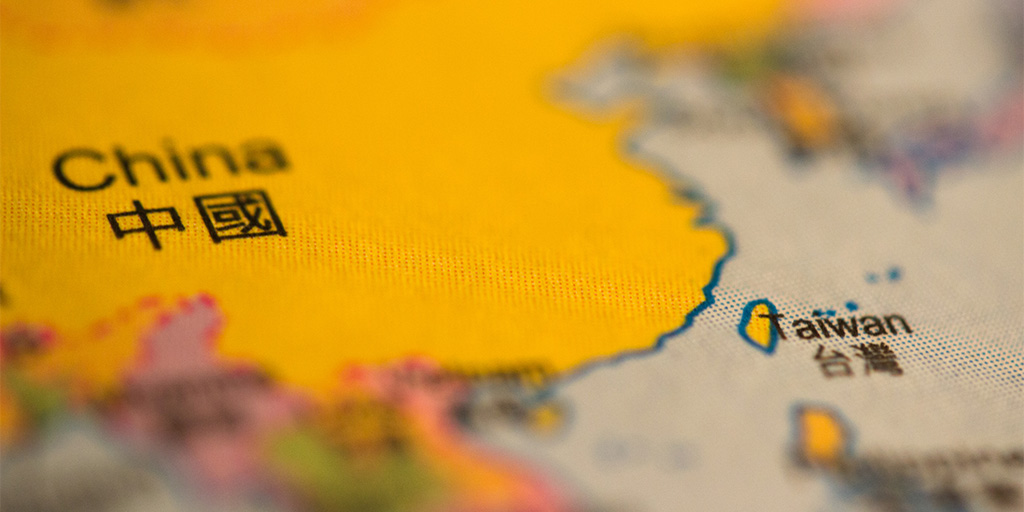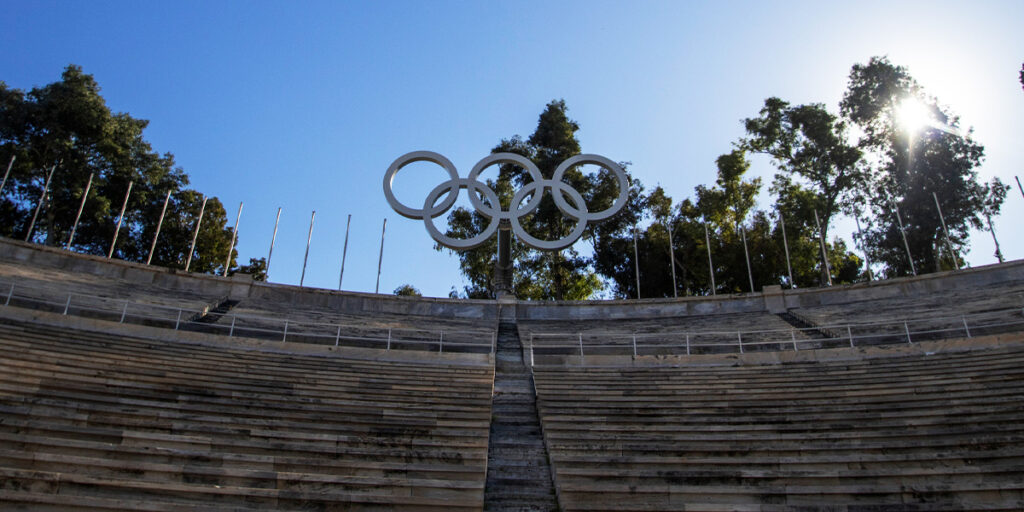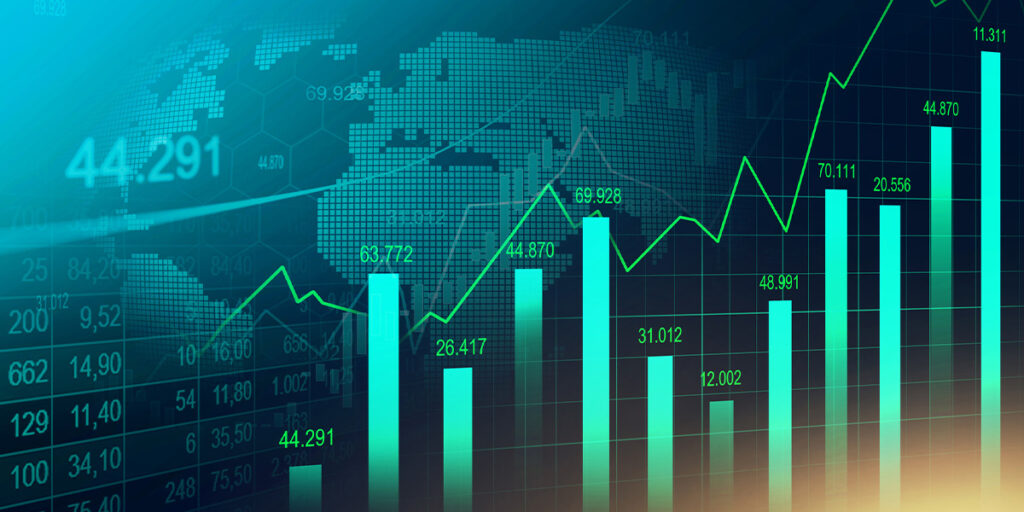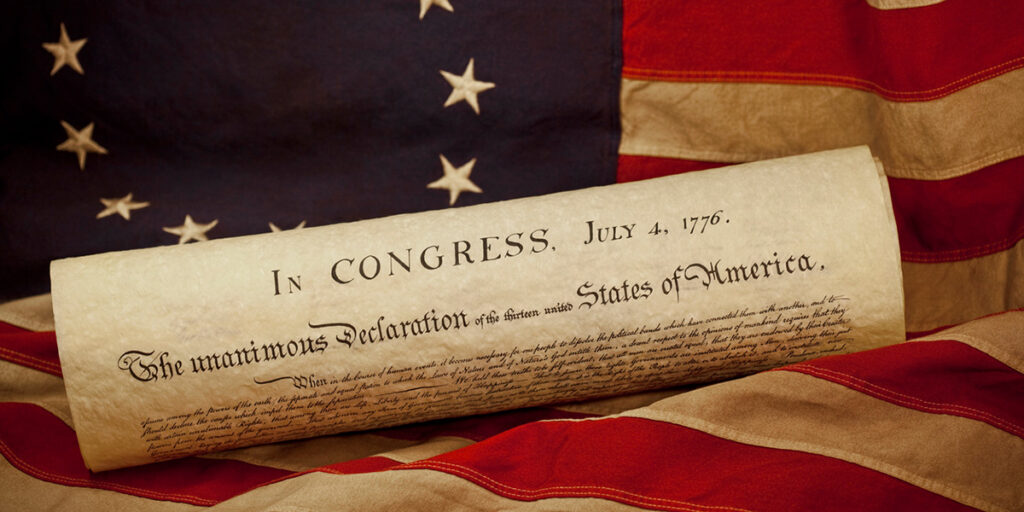For those of you who would prefer to listen, I put together an audio podcast for your listening pleasure.
You no doubt heard there was great controversy over the recent visit by America’s Speaker of the House to Taiwan. China did not like it. China did not like it one bit. The situation created a bit of a standoff. Neither side wanted to show weakness. It was a moment. The moment has passed. But the significance is present and quite important. Were you wondering what the commotion was about? You definitely weren’t alone. Taiwan was one of the most frequently searched words on Google early in the month of August. I’ve had a number of people ask me to cover this subject. What does Taiwan mean to the Market? Why is it that Taiwan matters so much? It’s a pretty complex topic. It goes back a while. But like anything, it’s really important to understand the “why” so we can deal with the “what.” This is my endeavor to frame the situation around Taiwan and where it might be headed.
The United States and China are by far the most important strategic relationship in the 21st century and this Digital Age. There are no other nations even close. Comparisons are naturally drawn to the Americans and Soviets during in the Cold War, which gripped much of the second half of the 20th century. Sure, there are some similarities. But today’s Cold War, if it can be called that, is quite different.
The United States and the Soviet Union had a stark contrast ideologically. The US is a democracy which embraces free and open markets. The Soviet Union was a communist dictatorship that operated in a quite closed manner, mostly by force. The 2 Superpowers rivaled each other in military might. The United States was, and still is, the largest Economy in the world. Russia was not even close and was forced to make some radical adjustments in the 1980s, under Mikhail Gorbachev’s leadership, to prevent an economic collapse. It ultimately failed. The Cold War ended.
China, too, is a communist country, but it isn’t so ideological. It cares about its Economy, a lot. China embraces free markets with some pretty strict guidelines and a whole lot of control. China has become the #2 economic power, next to America, accounting for 19% of Global Gross Domestic Product. The United States is 24%. The spread has shrunk over the years. China has been an economic engine for the past 2 decades, growing over 10% per year early on. Many think that China will surpass the United States as the world’s economic leader by the end of this decade. There are some serious doubts as to whether that actually happens. This is perhaps one of many reasons why Taiwan has become the center of attention.
Taiwan is an island off the coast of southeast China. It is north of the Philippines. It is south of Japan and South Korea. Its geography is quite strategic and significant. Taiwan has a population of 24 Million people and has been governed independently from mainland China since 1949. There was a Chinese Civil War. The communists won. The new Chairman, Mao Zedong, formally founded the People’s Republic of China. The defeated Chinese Nationalist government, led by Chiang Kai-shek, known as the Republic of China, retreated to the island of Taiwan. That Republic of China is today known simply as Taiwan. The People’s Republic of China, also known as mainland China, adamantly asserts that Taiwan is a province and that there is one country, but 2 systems. The history is complicated.
In 1979, the US Congress passed the Taiwan Relations Act. It declares it to be the policy of the United States to “preserve and promote extensive, close, and friendly commercial, cultural, and other relations between the people of the United States and the people on Taiwan, as well as the people on the China mainland and all other people of the Western Pacific area.” That created what’s commonly known as the American foreign policy of “strategic ambiguity” towards China and Taiwan. You’ve probably heard that term. You might’ve even Googled it. The term has been circulated a lot of late. The Taiwan Relations Act allowed for American weapons to be sold to Taiwan, for self-defense. The US has sold a lot of weapons to Taiwan over the years. It might not stop there. The ambiguous language does not rule out the possibility of the United States defending Taiwan from a Chinese attack. There is strategic ambiguity in motion right now.
Chinese President Xi Jinping has made reunifying China a top priority since he took office in 2013. In January of 2020, Taiwan’s President Tsai Ing-wen won in a landslide re-election by campaigning on the rejection of China’s “one country, two systems” policy. That was just before the pandemic set in. Later in June, while the rest of the world struggled to respond to the coronavirus pandemic, President Xi effectively annexed Hong Kong. It’s believed that Xi felt empowered after doing so with relative ease and little consequence. It’s quite similar to the way Vladimir Putin felt after annexing Crimea in 2014. It’s been said that Xi’s aggressive crackdowns on the Hong Kong protesters were a deliberate message to Taiwan. The Chinese leader wanted to squash the independence movement by showing that resistance would be met with force. This activity seems very intentional, like a combat rehearsal. China has been building its military might for years. Spending has increased 7X in 3 decades. That’s where things stand now.
A lot has changed over the decades. Taiwan has emerged as a hotbed issue between these 21st-century superpowers. Beijing believes Speaker Pelosi’s trip was a violation of its one-China principle. China does not trust American influence and intentions. There has been a long understanding that Taiwan would not seek independence. That view is being tested by Taiwan’s current President. She does not subscribe to one China, 2 systems. Independence is becoming increasingly popular with the people of Taiwan, preferring the openness of free markets and free thinking. The communist government in Beijing views American diplomats as threats to manipulate and give oxygen to Taiwan independence in order to contain China’s power and growth. China does not like that at all. Beijing responded to the Pelosi trip by sending missiles, warships, and planes in and around the island to send a clear message. It also severed lines of communication with the United States around military and climate change talks. It’s likely temporary, but how long is temporary and what lasting damage will be done? It’s unknowable now.
Chinese President Xi Jinping finds himself today in a really tough spot. China is facing pressures both economically and geopolitically, and they’re occurring simultaneously. He is up for re-election in the Fall, seeking an unprecedented third term, which could very well lead to being China’s leader for life. Xi is a very powerful autocrat. But his position is not guaranteed. The conventional thinking is, as long as the Chinese leader provides stability and prosperity for the people, he will remain in power. Xi’s hope for stability ahead of a historic Communist Party Congress is slipping big time.
The United States and China have a co-dependent economic relationship. Exports are the backbone of the Chinese Economy. Despite all the tension between the two nations, the United States still buys over 17% of Chinese exports. The US is the largest importer of Chinese goods. As China modernizes, the country is trying to transition from an export Economy to one of innovation and consumption, much like the United States. China is currently experiencing some growing pains. Those pains are leading to increasingly aggressive actions against officials who don’t toe the line. It’s also complicating China’s efforts to find other customers. For the first time, President Xi Jinping is facing questions about his leadership.
China has a Zero Covid policy. It’s the strictest on the planet. The government has forced shutdowns on numerous occasions. The policy has not been popular with the people. The Chinese Economy has suffered. Chinese Industrial Production rose just 3.8% in July. Expectations were +4.6%. It was lower than the 3.9% growth reported in June. It’s going in the wrong direction. Retail sales increased just 2.7% in July compared to a year ago. It was forecast to grow 5%. China’s jobless rate for 16-to-24-year-olds hit 19.9%, the highest ever recorded. China’s Economy is growing at just 2%. Xi has just a few months to turn this sliding economic crisis around before the election. 20% youth unemployment is a big problem for the President.
China might have just wagged the dog. Perhaps Xi saw Pelosi’s trip as a gift ahead of the election while China’s Economy struggles. There’s nothing like a ploy to rattle nationalist emotions against a perceived adversary as a distraction from disappointing results. Zero Covid policy has crushed economic activity. The Chinese economic engine was already slowing before the pandemic. China has been struggling to maintain cheap and stable energy sources. And its air and water are dirty. Demographics are challenging. Aging and its previous 1 child campaign are taking an economic toll. The WSJ pointed out that China will be losing 70 Million working-age citizens in the next decade while gaining 120 Million new seniors. Taiwan could be a temporary distraction for the Chinese from their economic pain. The Chinese are patriotic people. It’s certainly possible they see these military drills as a sign of strength. That’s exactly what Xi wants.
Our Washington sources say President Xi simply cannot risk a significant break with the United States right now. “He has no lever with which to punish the United States economically. The United States, on the other hand, has at least two: cutting imports from China, and threatening its many Dollar-denominated dealings. China is aware that the first line of any battle plan is the use of economic sanctions, and now would be a particularly bad time for them. It’s the last thing Xi needs before the November meeting.“
Here’s another major factor: Taiwan produces 90% of the global supply of semiconductors in circulation. You read that right; 90% is not a typo. It’s a really big number. South Korea is a distant second at 8%. The Taiwan Semiconductor Manufacturing Company (TSMC) is the giant here. Apple is amongst Taiwan Semi’s largest customers. Another problem for Apple, the iPhone is manufactured in mainland China. It’s not just corporate computing and consumer electronics at risk. Global defense systems are run with chips made in Taiwan, including the United States military. If China invades Taiwan by force, it could disrupt the availability of semiconductors when the supply is already struggling to meet demand.
America doesn’t want to be held hostage for vital supplies. Washington went to work. The high-profile Semiconductor Bill just passed. It’s called the CHIPS and Science Act. $50 Billion will be invested in American chip manufacturing. It was a bipartisan bill, but plenty on both sides voted against it. Like anything in Washington, politics play a big role, and no bill is perfect. The impact won’t be immediate. It’s merely a start. The bill is seen as a competitive win for the chip industry, especially with regard to China. It is still unclear how and when the Commerce Department will review grant awards or decide to underwrite projects. The Chinese Embassy in Washington aggressively lobbied against the legislation, saying it “firmly opposed” the bill and that it had echoes of “Cold War mentality.” The goal is to make the US home to the most advanced Research, Development and Manufacturing in the world again. Made in America is always more expensive, when measured in Dollars. For the first time in decades, the cost of stability and national security is being measured in the calculus too.
There’s also this: The vast majority of iPhone’s are made in China. Apple has long outsourced its manufacturing to a partner named Foxconn. Most iPhones are made in Shenzen. Apple has asked suppliers to ensure that shipments from Taiwan to China strictly comply with Chinese customs regulations after Speaker Pelosi’s trip. It was reported that Apple told suppliers that China has started strictly enforcing a long-standing rule that Taiwanese-made parts and components must be labeled as being made either in “Taiwan, China” or “Chinese Taipei.” There is some time sensitivity here. The new iPhones and other Apple products are set to launch in September. Apple is already looking to switch watch production from China to Vietnam. Expect that trend to continue.
China’s perceived goal is to replace the US as the Global Superpower. To that end, Beijing has developed the “Made in China 2025” plan. The strategy is for China to become the dominant innovator within emerging and traditional industries, including artificial intelligence, biotechnology, 5G, robotics, electric cars, and agricultural machinery. 2025 will be here sooner than you think. Apparently, the Superpower isn’t as super as it anticipated. China’s leadership has reportedly grown increasingly frustrated with a years-long failure to develop semiconductors that can replace the United States. Some believe a Chinese seizure of TSMC would enhance the Made in China goal. That would be a major undertaking. Realistically, a Chinese-controlled TSMC would lose customers quickly and stymy the innovative spirit of the free markets it currently possesses. Our sources see this as incredibly unlikely. But China definitely plays the long game. The year 2049 could be the ultimate goalpost for China in measuring its Superpower status. That is, of course, the 100th anniversary of the founding of the People’s Republic of China. There is great symbolism there.
What does all this mean for Japan? South Korea? Australia? India? Europe? These are large trading partners with very substantial militaries. They’re also amongst America’s closest allies. The war in Ukraine brought NATO closer than it’s been in decades. The situation in Taiwan is quite different, though. If Taiwan falls, China will be able to project military power throughout Asia. Japan, the Philippines, Southeast Asia, and the Pacific islands would all be more vulnerable to China’s military. These countries don’t want that. The United States doesn’t want it either. Asia-Pacific is on high alert right now. Economics and Geopolitics can be quite conflicted. Trust is a rare commodity these days. Keep in mind, even America isn’t necessarily viewed as trustworthy anymore. Populism and self-interest have certainly taken over regional and national governing. China is trying to provide an alternative to the western way. Democracy is being tested. It’s not being valued today the way it once was.
The United States just reached an agreement with Taiwan to start trade negotiations under the US-Taiwan Initiative on 21st-Century Trade. The first round of talks is set to begin in the Fall. Earlier, President Biden pledged bilateral talks with the island government after Taiwan was excluded from the multilateral Indo-Pacific Economic Framework. The other countries were fearful of angering Beijing. This initiative with Taiwan would not require Congressional approval. That said, it’s not clear how much support it will receive. China will be watching these developments closely.
China clearly capitalized on Speaker Pelosi’s visit. The goal was to amplify the volume of its warning. It was very intentional. The size of the force displayed and the expressions of China’s rage gave a sense of a modern-day Cuban Missile Crisis moment. Neither side wanted to flinch. The appearance of looking weak was to be avoided at a potentially high cost. According to one of our sources, for Beijing, the stakes were pretty low. If it failed to deliver any of these messages, little was lost. Whatever the case, the Speaker’s visit triggered a very loud response from China. A great many ships and planes fired a great deal of ammunition, none of which struck Taiwan or a vessel. But the message was clear. A line seemed to be drawn. And that line goes straight through Taiwan.
Just this week, it was reported that President Xi will attend the G20 meeting in Bali in November. Russian President Vladimir Putin will apparently be there too. For President Putin, it could be a showdown: Ukrainian President Volodymyr Zelenskyy is planning to attend, possibly setting up the first face-to-face meeting between the two since Russia invaded Ukraine. How Xi carries himself will be studied closely as he has built a strong alliance with Putin. US officials have pressured the Indonesian hosts to disinvite Vladimir Putin while tensions with China are heightening over Taiwan. Of significance, this would be the first trip for the Chinese President on foreign soil in 3 years. President Xi has not traveled outside of China since the pandemic began.
What does this mean for the Market? Well, it’s certainly taking things very much in stride, showing little stress from this subject. It seems to be looking past the current state of rhetoric and military tests. But it won’t turn a blind eye to what could lead to something much bigger. The American Chamber of Commerce in Taiwan took a survey this week. Its members said they had not been significantly affected by the Chinese military drills, but do have major concerns. Half the group said that if these military drills continue, it will have a negative impact on business. At the top of the list of concerns from business leaders are boycotts, embargoes, travel bans and something that continues to be a serious issue everywhere; Misinformation. Understanding issues is so important before forming an opinion. It is so easy to manipulate things these days with a proliferation of uncredible sources and a lack of confidence in our institutions. It’s a huge problem. That’s why we trust the Market to provide clearer signals. The Market is a living, breathing animal. It prices in events, both actual and anticipated. The Market is forward-looking. It reflects the wisdom of crowds.
We are going to need to get used to this. Presidents Biden and Xi are reportedly meeting in person at the G20 event. That will be after the midterm elections here and China’s Fall event there. This brewing Tech Cold War between the US and China is forcing companies and countries to pick sides. The result could be a “splinternet,” with essentially 2 separate World Wide Webs. The United States and China combine for over 40% of global GDP. A hot war would guarantee a global recession. Asia-Pacific would feel it the most, but the economic pain would be felt throughout every continent. A potential war has been estimated to hit the US Economy by as much as 10% and China by over 30%. There would be no winners.
The United States and China are doing what they can to secure power and influence. Both want to win the 21st Century and the Digital Age. Something that seems quite evident: Peace without peace sure sounds like a Cold War. The challenge is to keep it cold, at best, for now. As I stated earlier, the message was clear. A line seemed to be drawn. And that line goes straight through Taiwan.
Have a nice weekend. We’ll be back, dark and early on Monday.
Mike







